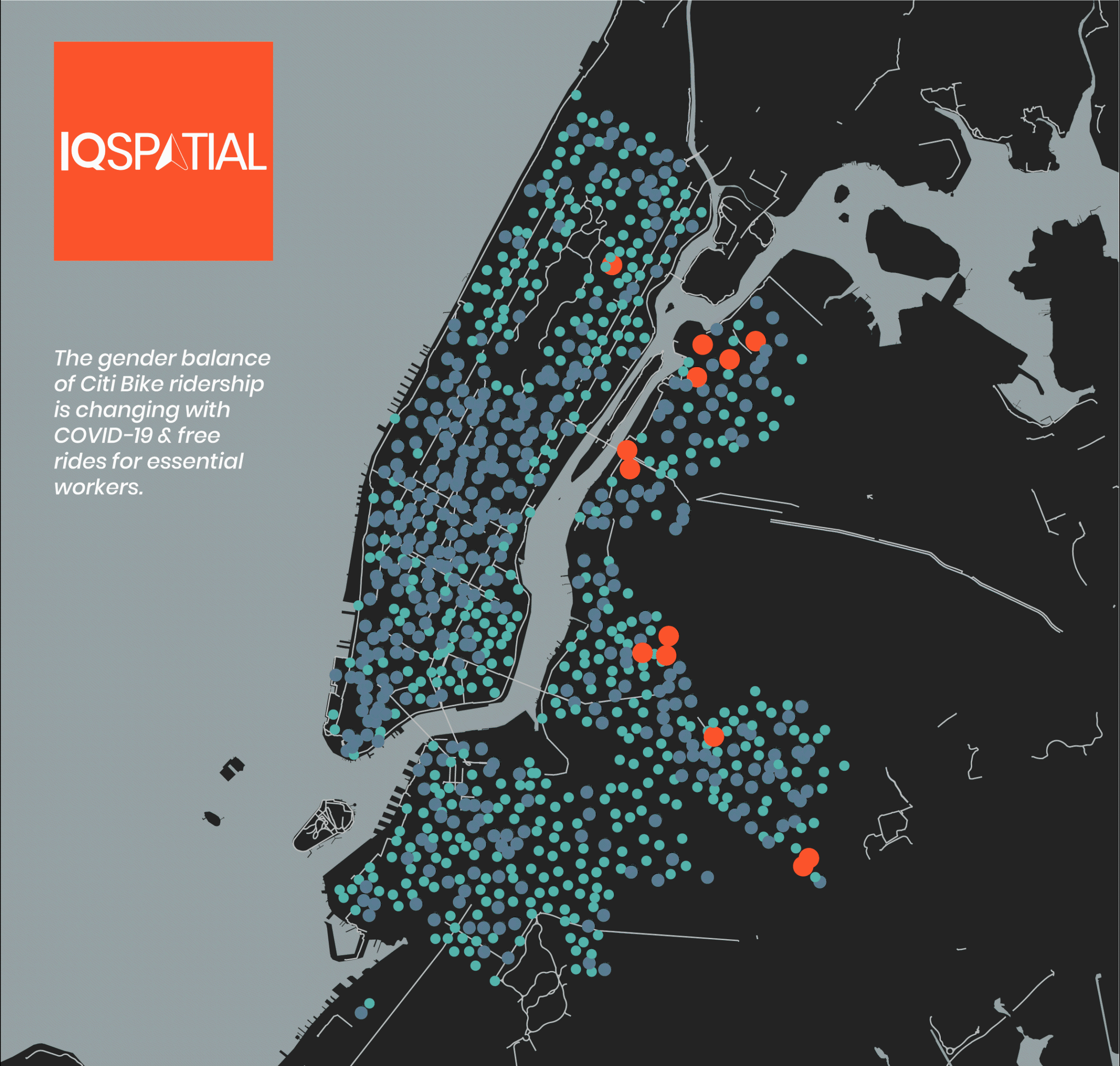
Intersections of Gender Discrimination, COVID-19 and Micromobility
Since COVID-19, the gender-balance of Citi Bike ridership has only shifted slightly for essential workers, who are predominately women. Why? Because where bikeshare stations are located limits access to women working in vital industries.

Essential workers’ bike access limited during COVID-19 crisis
Bike commuting on protected lanes that cut the risk of injury due to collisions by 20% and help riders maintain social distancing, is not an option for most essential workers. Fewer than 35% of NYC’s essential workers have access to safe biking infrastructure and only a third of hospitals and medical facilities are safely accessible by bike.
Why it Matters: A safe bicycle commute can slash workers’ commuting expenses dramatically. With packed buses and unsafe crowding conditions for public transit, there is potential to improve essential workers’ health and limit their coronavirus exposure with a bike commute on protected lanes and trails.
Safe protected bicycle infrastructure, within less than a quarter-mile, is available to less than 35% of NYC’s essential workers. Fewer still have access to bikeshare, only 18%.
